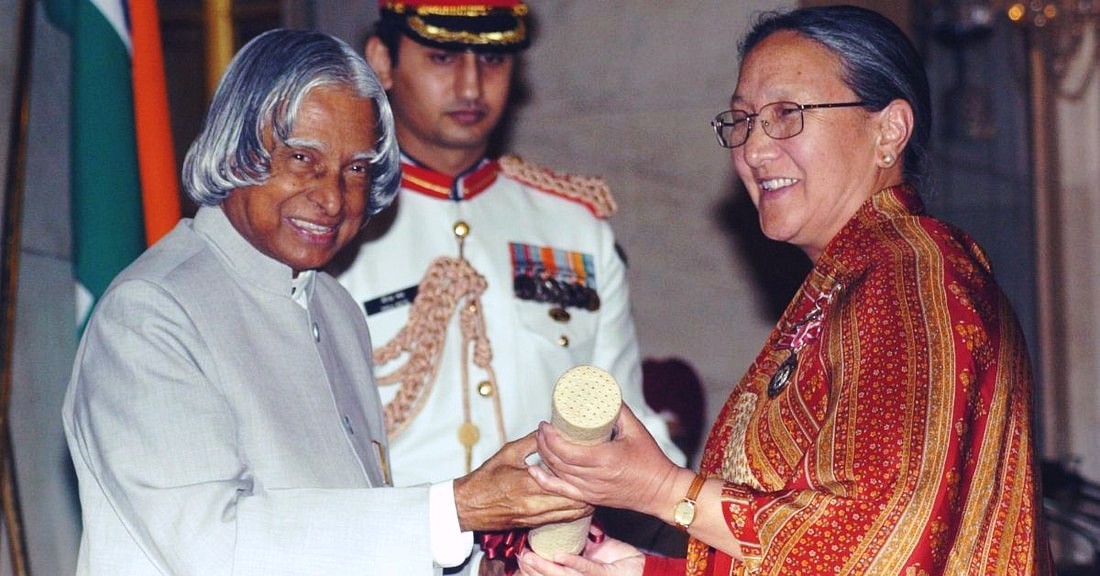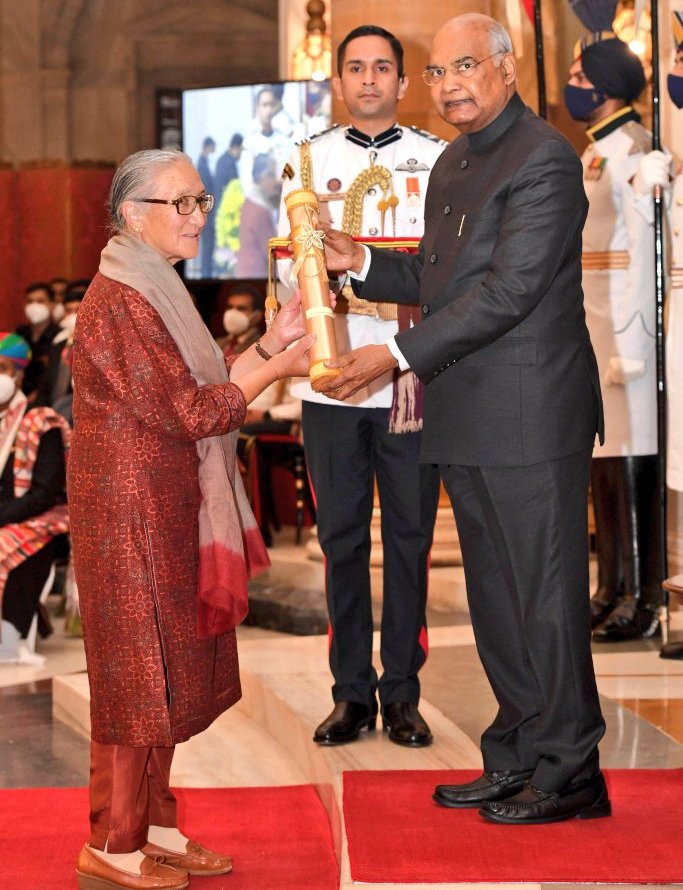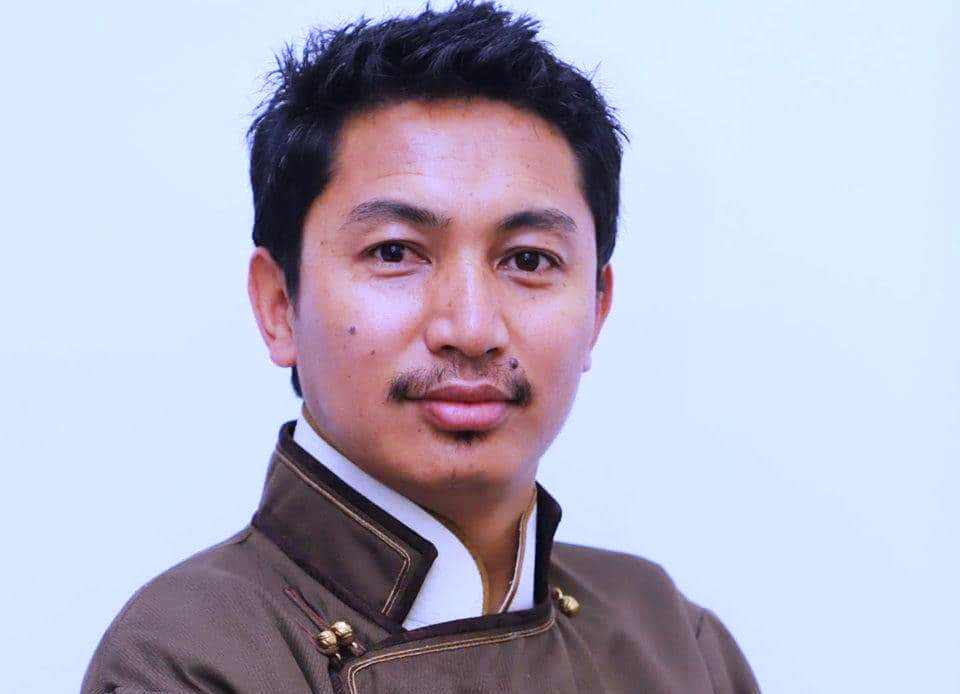Last week, President Ramnath Kovind handed over Padma Bushan to Dr Tsering Landol. The honour came to her after APJ Avul Kalam gave her Padma Shree in 2006. This was in acknowledgement of the contribution, Ladakh’s first gynaecologist made to the arid desert region since 1979

Watching one’s own mother being separated from the family during childbirth and being fed in separate vessels might not be so uncommon in traditionally conservative and superstitious societies. For a daughter, however, watching all this creates indelible impressions on the mind. It sometimes crushes people and in rare cases helps them fight it out and trigger a change.
That is what exactly happened in the case of Tsering Landol, Ladakh’s first gynaecologist in history, who was bestowed Padma Shree in 2006, and Padma Bushan in 2020, an honour she received at the age of 76, last week.
Single by choice, Dr Tsering is the key factor responsible for changing the traditional childbirth systems in the arid Ladakh desert. She might be the most important factor in changing the growth rate of a population that once thought one is too many. Bagging India’s two highest civilian awards post-retirement is recognition of her contributions but her story is too vital to be ignored even in a separated ‘territory’ where she was educated and trained to pick a surgeon’s scalpel.
A Humble Background
Born to the agrarian family of Rigzin Namgyal in Leh’s Changspa locality, Ms Tsering was one of the six siblings who studied locally. While in school, she was fascinated by the image of a doctor wearing his stethoscope around his neck. Perhaps it had something to do with her urge to be a doctor. But there were practical problems in hitting the target.
Her schooling took place in an era when Jammu and Kashmir’s formal education system was still evolving and experimenting with newer and fewer ideas. Though she was enrolled in the Moravian Mission School for basic education, when she joined the Government-run High School in Leh, the classroom language was Urdu. When she had to write her matriculation examination, she had picked knowledge in Urdu but she was supposed to write in English, a language that government schools would introduce in the sixth class.
Somehow, after her twelfth standard, she eventually secured good grades and managed to get admission to the Government Medical College, Srinagar, a place where she made the decision of what she is going to do and why. After finishing her graduation, she put some time in Srinagar for an internship and picked up the skills that a gynaecologist must have.
However, she soon made her way to Srinagar, where she studied at the Government Medical College, specialising in obstetrics and gynaecology. With a cutting edge skill set and a fair knowledge of the society she wanted to help, Dr Tsering Landol drove home in 1979 and became the Sonam Norbu Hospital’s first gynaecologist.
Challenges At Home
Back home, she was face to face with two types of challenges. Firstly, at the social level, the superstitions and inhibitions were preventing the women from being part of the institutional baby delivery setup. Secondly, the climatic conditions of the region were adding to the neo-natal mortality in huge numbers.
During winters, when the temperatures fell to more than minus twenty degrees Celsius, it was very difficult for the doctors managing the obstetrics section at the SN Hospital to manage deliveries professionally. There were two issues – an intense cold environment that was heated by traditional coal heaters. The bukhari emissions were adding toxic gases to the oxygen deplete rooms thus endangering the lives of babies and the mother. Using highly inflammable anaesthesia near the bukhari was another hazard that was keeping the doctors on toes.
It was at this juncture that Dr Tsering’s protracted stay at Srinagar helped. She suggested importing Kashmiri Hamam technology – a wood-burning stove and creating the labour room and post-operation section within it. After a lot of discussions, the hospital administration approved the idea.
It triggered a quick change. With the temperature improving to thirty degrees instantly, the deaths during deliveries almost ended.
It was after many decades of dithering that the policymakers finally approved an air conditioning plant for the key hospital theatres including the labour room. Kashmir, till recently, was a seriously energy-deficit space. By then, Dr Tsering had emerged as the head of the unit that she retained till she superannuated in 2003.
Fighting Bias, Stigma
Much of Dr Tsering’s contributions, however, were outside the hospital. She knew the age-old inhibitions of the society that required a long term campaign at the grassroots level for which she would move around in the vast periphery of Ladakh and make people understand the costs they are paying for the biases and ignorance. It required a lot of work to undo a tradition that would make a pregnant lady, almost untouchable in her own home. Gradually this started helping society.

In making all these things happen, Dr Tsering had an advantage. After her internship in Srinagar, she had the opportunity to fly to London for four months for a training capsule that British Council sponsored. There, and in Delhi and Singapore, she made a lot of friends. Back home, when she shared the crisis with her friends about the basic medical facilities they came to her rescue and helped raise some funds that led the hospital in Leh to have a Cervical Scan facility. They also raised some funds that enabled Dr Tsering’s team to move around for educating the population against the dogmas and myths surrounding women and childbirth.
Dr Tsering and her team within and outside the hospital would take time to talk to the girl students in the schools and educate them about the issues related to puberty and other hormonal issues impacting females more often than men. So the stigma attached to female health issues started disappearing gradually.
A Visible Change
The change that was brought about by Dr Tsering’s efforts started reflecting. In 1980, a year after Dr Tsering joined the hospital in Leh, the hospital recorded 114 births. A year later, the number doubled. By 1995, almost half of the birth in Leh had taken place in SN Hospital. The year she superannuated, the number of institutional births in Leh was 1241.
As the situation started changing in the Leh and its immediate outskirts, the area in Kargil and Zanskar also started following the suit. The numbers in institutional births started improving in both places. This played a key role in changing the growth rate of the minority Buddhists in Jammu and Kashmir, from 30.15 per cent between 1991 and 2001 to 25.48 per cent in the decade ending 2011.
Ladakh region, now a separate Union Territory, is home to 274289 people, according to the 2011 headcount, which includes 33223 Hindus (12.11 per cent), 108761 Buddhists (39.65 per cent) and 127296 Muslims (46.40 per cent). The region’s population was at 134372 in 1981 and 232924 in the 2001 census. Dr Tasering has been a key factor in fighting stigmas that helped improve the growth rate, especially of the Buddhist population.
Post Retirement
Dr Tsering’s services did not halt with her retirement. They actually improved. She would move around and continue her mass education, meet people, get into schools and interact with the female students. At the same, time, she would meet the policymakers at the local level and help get quick interventions that would not require legislation.
Post-retirement, she associated with the Ladakh Heart Foundation Hospital, an initiative by a monk Lama Thupstan Chogyal, who belongs to the family of traditional medical practitioners. Starting in 1997 in Delhi, LHF has a hospital where more than 300 cardiac interventions have taken place. Dr Tsering examines pregnant ladies with heart issues once a week in this hospital. LHF is locally being credited for fighting rheumatic heart disease (RHD) that was quite common at a young age.
Honours, Respect
These contributions were the prime motivation for the award selectors in the President of India’s office to confer Padma Shree on Dr Tsering Landol in 2006. In 2020, she got Padma Bhushan, the second-highest civilian award in India. Both the honours were well deserved.
Dr Tsering, however, said these honours have added more responsibility to her. For her entire career, she never would be on leave. Post-retirement, she hardly stops thinking about the society she belongs to. “I may have retired, but I am still physically and mentally fit. So even though I am too old for emergency cases, I still want to offer whatever I can to my patients,” Dr Tsering was quoted saying after the recent honour. “It is very much needed in this region.”















